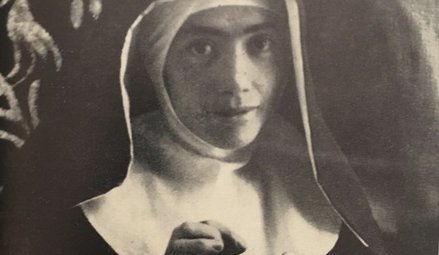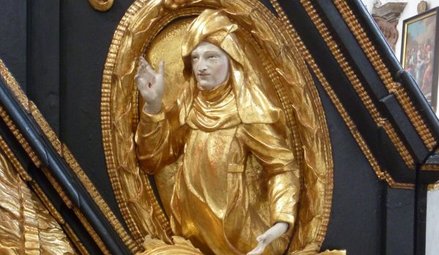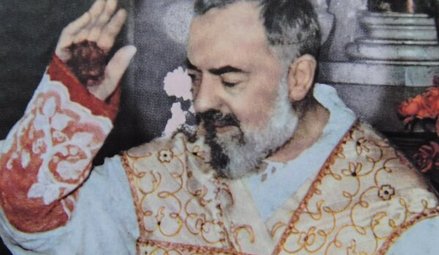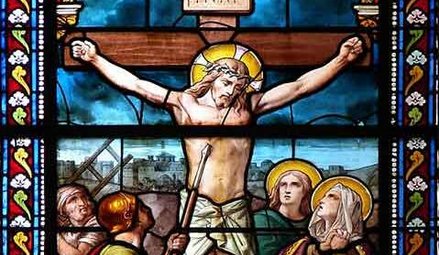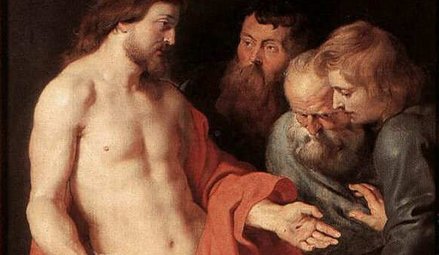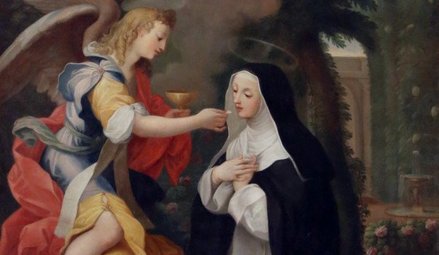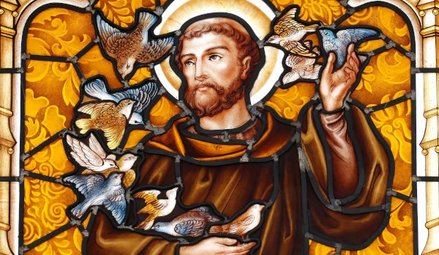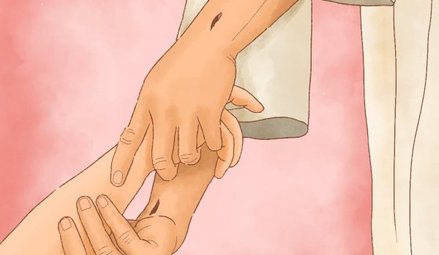- By theme
- Jesus
- The many proofs of Christ’s resurrection
- Saint Thomas Aquinas: God gave all the divine proofs we needed to believe
- The surpassing power of Christ's word
- Lewis’s trilemma: a proof of Jesus’s divinity
- God saves: the power of the holy name of Jesus
- Jesus spoke and acted as God's equal
- Jesus' divinity is actually implied in the Koran
- Jesus came at the perfect time of history
- Rabbinical sources testify to Jesus' miracles
- Mary
- The Church
- The Bible
- An enduring prophecy and a series of miraculous events preventing the reconstruction of the Temple
- The authors of the Gospels were either eyewitnesses or close contacts of those eyewitnesses
- Onomastics support the historical reliability of the Gospels
- The New Testament was not altered
- The New Testament is the best-attested manuscript of Antiquity
- The Gospels were written too early after the facts to be legends
- Archaeological finds confirm the reliability of the New Testament
- The criterion of embarrassment proves that the Gospels tell the truth
- The dissimilarity criterion strengthens the case for the historical reliability of the Gospels
- 84 details in Acts verified by historical and archaeological sources
- The unique prophecies that announced the Messiah
- The time of the coming of the Messiah was accurately prophesied
- The prophet Isaiah's ultra accurate description of the Messiah's sufferings
- Daniel's "Son of Man" is a portrait of Christ
- The Apostles
- Saint Peter, prince of the apostles
- Saint John the Apostle: an Evangelist and Theologian who deserves to be better known (d. 100)
- Saint Matthew, apostle, evangelist and martyr (d. 61)
- James the Just, “brother” of the Lord, apostle and martyr (d. 62 AD)
- Saint Matthias replaces Judas as an apostle (d. 63)
- The martyrs
- The protomartyr Saint Stephen (d. 31)
- Polycarp, bishop of Smyrna, disciple of John and martyr (d. 155)
- Justin Martyr: philosopher and apologist (d.165)
- Saint Blandina and the Martyrs of Lyon: the fortitude of faith (177 AD)
- Saint Agatha stops a volcano from destroying the city of Catania (d. 251)
- Saint Lucy of Syracuse, virgin and martyr for Christ (d. 304)
- Saint Boniface propagates Christianity in Germany (d. 754)
- Thomas More: “The king’s good servant, but God’s first”
- The martyrdom of Paul Miki and his companions (d. 1597)
- The martyrs of Angers and Avrillé (1794)
- The Martyrs of Compiègne (1794)
- The Vietnamese martyrs Father Andrew Dung-Lac and his 116 companions (17th-19th centuries)
- He braved torture to atone for his apostasy (d. 1818)
- Blaise Marmoiton: the epic journey of a missionary to New Caledonia (d. 1847)
- The Uganda martyrs: a recurring pattern in the persecution of Christians (1885)
- José Luis Sanchez del Rio, martyred at age 14 for Christ the King (d. 1928)
- Saint Maximilian Kolbe, Knight of the Immaculate (d. 1941)
- The monks
- The Desert Fathers (3rd century)
- Saint Anthony of the Desert, a father of monasticism (d. 356)
- Saint Benedict, father of Western monasticism (d. 550)
- Saint Bruno the Carthusian (d.1101): the miracle of a hidden life
- Blessed Angelo Agostini Mazzinghi: the Carmelite with flowers pouring from his mouth (d. 1438)
- Monk Abel of Valaam's accurate prophecies about Russia (d. 1841)
- The more than 33,000 miracles of Saint Charbel Maklouf (d. 1898)
- Saint Pio of Pietrelcina (d. 1968): How God worked wonders through "a poor brother who prays"
- The surprising death of Father Emmanuel de Floris (d. 1992)
- The prophecies of Saint Paisios of Mount Athos (d. 1994)
- The saints
- Saints Anne and Joachim, parents of the Virgin Mary (19 BC)
- Saint Nazarius, apostle and martyr (d. 68 or 70)
- Ignatius of Antioch: successor of the apostles and witness to the Gospel (d. 117)
- Saint Gregory the Miracle-Worker (d. 270)
- Saint Martin of Tours: patron saint of France, father of monasticism in Gaul, and the first great leader of Western monasticism (d. 397)
- Saint Augustine of Canterbury evangelises England (d. 604)
- Saint Lupus, the bishop who saved his city from the Huns (d. 623)
- Saint Rainerius of Pisa: from musician to merchant to saint (d. 1160)
- Saint Dominic of Guzman (d.1221): an athlete of the faith
- Saint Francis, the poor man of Assisi (d. 1226)
- Saint Anthony of Padua: "everyone’s saint"
- Saint Rose of Viterbo or How prayer can transform the world (d. 1252)
- Saint Simon Stock receives the scapular of Mount Carmel from the hands of the Virgin Mary
- The unusual boat of Saint Basil of Ryazan
- Saint Agnes of Montepulciano's complete God-confidence (d. 1317)
- The extraordinary conversion of Michelina of Pesaro
- Saint Peter Thomas (d. 1366): a steadfast trust in the Virgin Mary
- Saint Rita of Cascia: hoping against all hope
- Saint Catherine of Genoa and the Fire of God's love (d. 1510)
- Saint Anthony Mary Zaccaria, physician of bodies and souls (d. 1539)
- Saint Ignatius of Loyola (d. 1556): "For the greater glory of God"
- Brother Alphonsus Rodríguez, SJ: the "holy porter" (d. 1617)
- Martin de Porres returns to speed up his beatification (d. 1639)
- Virginia Centurione Bracelli: When God is the only goal, all difficulties are overcome (d.1651)
- Saint Marie of the Incarnation, "the Teresa of New France" (d.1672)
- St. Francis di Girolamo's gift of reading hearts and souls (d. 1716)
- Rosa Venerini: moving in the ocean of the Will of God (d. 1728)
- Saint Jeanne-Antide Thouret: heroic perseverance and courage (d. 1826)
- Seraphim of Sarov (1759-1833): the purpose of the Christian life is to acquire the Holy Spirit
- Camille de Soyécourt, filled with divine fortitude (d. 1849)
- Bernadette Soubirous, the shepherdess who saw the Virgin Mary (1858)
- Saint John Vianney (d. 1859): the global fame of a humble village priest
- Gabriel of Our Lady of Sorrows, the "Gardener of the Blessed Virgin" (d. 1862)
- Father Gerin, the holy priest of Grenoble (1863)
- Blessed Francisco Palau y Quer: a lover of the Church (d. 1872)
- Saints Louis and Zelie Martin, the parents of Saint Therese of Lisieux (d. 1894 and 1877)
- The supernatural maturity of Francisco Marto, “contemplative consoler of God” (d. 1919)
- Saint Faustina, apostle of the Divine Mercy (d. 1938)
- Brother Marcel Van (d.19659): a "star has risen in the East"
- Doctors
- The mystics
- Lutgardis of Tongeren and the devotion to the Sacred Heart
- Saint Angela of Foligno (d. 1309) and "Lady Poverty"
- Saint John of the Cross: mystic, reformer, poet, and universal psychologist (+1591)
- Blessed Anne of Jesus: a Carmelite nun with mystical gifts (d.1621)
- Catherine Daniélou: a mystical bride of Christ in Brittany
- Saint Margaret Mary sees the "Heart that so loved mankind"
- Jesus makes Maria Droste zu Vischering the messenger of his Divine Heart (d. 1899)
- Mother Yvonne-Aimée of Jesus' predictions concerning the Second World War (1922)
- Sister Josefa Menendez, apostle of divine mercy (d. 1923)
- Edith Royer (d. 1924) and the Sacred Heart Basilica of Montmartre
- Rozalia Celak, a mystic with a very special mission (d. 1944)
- Visionaries
- Saint Perpetua delivers her brother from Purgatory (203)
- María de Jesús de Ágreda, abbess and friend of the King of Spain
- Discovery of the Virgin Mary's house in Ephesus (1891)
- Sister Benigna Consolata: the "Little Secretary of Merciful Love" (d. 1916)
- Maria Valtorta's visions match data from the Israel Meteorological Service (1943)
- Berthe Petit's prophecies about the two world wars (d. 1943)
- Maria Valtorta saw only one pyramid at Giza in her visions... and she was right! (1944)
- The location of Saint Peter's village seen in a vision before its archaeological discovery (1945)
- The 700 extraordinary visions of the Gospel received by Maria Valtorta (d. 1961)
- The amazing geological accuracy of Maria Valtorta's writings (d. 1961)
- Maria Valtorta's astronomic observations consistent with her dating system
- Discovery of an ancient princely house in Jerusalem, previously revealed to a mystic (d. 1961)
- Mariette Kerbage, the seer of Aleppo (1982)
- The 20,000 icons of Mariette Kerbage (2002)
- The popes
- The great witnesses of the faith
- Saint Augustine's conversion: "Why not this very hour make an end to my uncleanness?" (386)
- Thomas Cajetan (d. 1534): a life in service of the truth
- Madame Acarie, "the servant of the servants of God" (d. 1618)
- Blaise Pascal (d.1662): Biblical prophecies are evidence
- Madame Élisabeth and the sweet smell of virtue (d. 1794)
- Jacinta, 10, offers her suffering to save souls from hell (d. 1920)
- Father Jean-Édouard Lamy: "another Curé of Ars" (d. 1931)
- Christian civilisation
- The depth of Christian spirituality
- John of the Cross' Path to perfect union with God based on his own experience
- The dogma of the Trinity: an increasingly better understood truth
- The incoherent arguments against Christianity
- The "New Pentecost": modern day, spectacular outpouring of the Holy Spirit
- The Christian faith explains the diversity of religions
- Cardinal Pierre de Bérulle (d.1629) on the mystery of the Incarnation
- Christ's interventions in history
- Marian apparitions and interventions
- The Life-giving Font of Constantinople
- Apparition of Our Lady of La Treille in northern France: prophecy and healings (600)
- Our Lady of Virtues saves the city of Rennes in Bretagne (1357)
- Mary stops the plague epidemic at Mount Berico (1426)
- Our Lady of Miracles heals a paralytic in Saronno (1460)
- Cotignac: the first apparitions of the Modern Era (1519)
- Savona: supernatural origin of the devotion to Our Lady of Mercy (1536)
- The Virgin Mary delivers besieged Christians in Cusco, Peru
- The victory of Lepanto and the feast of Our Lady of the Rosary (1571)
- The apparitions to Brother Fiacre (1637)
- The “aldermen's vow”, or the Marian devotion of the people of Lyon (1643)
- Our Lady of Nazareth in Plancoët, Brittany (1644)
- Our Lady of Laghet (1652)
- Saint Joseph’s apparitions in Cotignac, France (1660)
- Heaven confides in a shepherdess of Le Laus (1664-1718)
- Zeitoun, a two-year miracle (1968-1970)
- The Holy Name of Mary and the major victory of Vienna (1683)
- Heaven and earth meet in Colombia: the Las Lajas shrine (1754)
- The five Marian apparitions that traced an "M" over France, and its new pilgrimage route
- A series of Marian apparitions and prophetic messages in Ukraine since the 19th century (1806)
- "Consecrate your parish to the Immaculate Heart of Mary" (1836)
- At La Salette, Mary wept in front of the shepherds (1846)
- Our Lady of Champion, Wisconsin: the first and only approved apparition of Mary in the US (1859)
- Gietrzwald apparitions: heavenly help to a persecuted minority
- The silent apparition of Knock Mhuire in Ireland (1879)
- Mary "Abandoned Mother" appears in a working-class district of Lyon, France (1882)
- The thirty-three apparitions of the Virgin Mary in Beauraing (1932)
- "Our Lady of the Poor" appears eight times in Banneux (1933)
- Fontanelle-Montichiari apparitions of Our Lady "Rosa Mystica" (1947)
- Mary responds to the Vows of the Polish Nation (1956)
- Zeitoun apparitions
- The Virgin Mary comes to France's rescue by appearing at L'Ile Bouchard (1947)
- Maria Esperanza Bianchini and Mary, Mary, Reconciler of Peoples and Nations (1976)
- Luz Amparo and the El Escorial apparitions
- The extraordinary apparitions of Medjugorje and their worldwide impact
- The Virgin Mary prophesied the 1994 Rwandan genocide (1981)
- Our Lady of Soufanieh's apparition and messages to Myrna Nazzour (1982)
- The Virgin Mary heals a teenager, then appears to him dozens of times (1986)
- Seuca, Romania: apparitions and pleas of the Virgin Mary, "Queen of Light" (1995)
- Angels and their manifestations
- Mont Saint-Michel: Heaven watching over France
- The revelation of the hymn Axion Estin by the Archangel Gabriel (982)
- Angels give a supernatural belt to the chaste Thomas Aquinas (1243)
- The constant presence of demons and angels in the life of St Frances of Rome (d. 1440)
- Mother Yvonne-Aimée escapes from prison with the help of an angel (1943)
- Saved by Angels: The Miracle on Highway 6 (2008)
- Exorcisms in the name of Christ
- A wave of charity unique in the world
- Saint Peter Nolasco: a life dedicated to ransoming enslaved Christians (d. 1245)
- Rita of Cascia forgives her husband's murderer (1404)
- Saint Angela Merici: Christ came to serve, not to be served (d. 1540)
- Saint John of God: a life dedicated to the care of the poor, sick and those with mental disorders (d. 1550)
- Saint Camillus de Lellis, reformer of hospital care (c. 1560)
- Blessed Alix Le Clerc, encouraged by the Virgin Mary to found schools (d. 1622)
- Saint Vincent de Paul (d. 1660), apostle of charity
- Marguerite Bourgeoys, Montreal's first teacher (d. 1700)
- Frédéric Ozanam, inventor of the Church's social doctrine (d. 1853)
- Damian of Molokai: a leper for Christ (d. 1889)
- Pier Giorgio Frassati (d.1925): heroic charity
- Saint Dulce of the Poor, the Good Angel of Bahia (d. 1992)
- Mother Teresa of Calcutta (d. 1997): an unshakeable faith
- Heidi Baker: Bringing God's love to the poor and forgotten of the world
- Amazing miracles
- The miracle of liquefaction of the blood of St. Januarius (d. 431)
- The miracles of Saint Anthony of Padua (d. 1231)
- Saint Pius V and the miracle of the Crucifix (1565)
- Saint Philip Neri calls a teenager back to life (1583)
- The resurrection of Jérôme Genin (1623)
- Saint Francis de Sales brings back to life a victim of drowning (1623)
- Saint John Bosco and the promise kept beyond the grave (1839)
- The day the sun danced at Fatima (1917)
- Pius XII and the miracle of the sun at the Vatican (1950)
- When Blessed Charles de Foucauld saved a young carpenter named Charle (2016)
- Reinhard Bonnke: 89 million conversions (d. 2019)
- Miraculous cures
- The royal touch: the divine thaumaturgic gift granted to French and English monarchs (11th-19th centuries)
- With 7,500 cases of unexplained cures, Lourdes is unique in the world (1858-today)
- Our Lady at Pellevoisin: "I am all merciful" (1876)
- Mariam, the "little thing of Jesus": a saint from East to West (d.1878)
- The miraculous healing of Marie Bailly and the conversion of Dr. Alexis Carrel (1902)
- Gemma Galgani: healed to atone for sinners' faults (d. 1903)
- The miraculous cure of Blessed Maria Giuseppina Catanea
- The extraordinary healing of Alice Benlian in the Church of the Holy Cross in Damascus (1983)
- The approved miracle for the canonization of Juan Diego Cuauhtlatoatzin (1990)
- Healed by St Charbel Makhlouf, her scars bleed each month for the benefit of unbelievers (1993)
- The miracle that led to Brother André's canonisation (1999)
- Bruce Van Natta's intestinal regrowth: an irrefutable miracle (2007)
- He had “zero” chance of living: a baby's miraculous recovery (2015)
- Manouchak, operated on by Saint Charbel (2016)
- How Maya was cured from cancer at Saint Charbel's tomb (2018)
- Preserved bodies of the saints
- Dying in the odour of sanctity
- The body of Saint Cecilia found incorrupt (d. 230)
- Saint Claudius of Besançon: a quiet leader, a calm presence, and a strong belief in the value of prayer (d. 699)
- Stanislaus Kostka's burning love for God (d. 1568)
- Saint Germaine of Pibrac: God's little Cinderella (d. 1601)
- Blessed Antonio Franco, bishop and defender of the poor (d. 1626)
- Giuseppina Faro, servant of God and of the poor (d. 1871)
- The incorrupt body of Marie-Louise Nerbollier, the visionary from Diémoz (d. 1910)
- The great exhumation of Saint Charbel (1950)
- Bilocations
- Inedias
- Levitations
- Lacrimations and miraculous images
- Saint Juan Diego's tilma (1531)
- The Rue du Bac apparitions of the Virgin Mary to St. Catherine Labouré (Paris, 1830)
- Mary weeps in Syracuse (1953)
- Teresa Musco (d.1976): salvation through the Cross
- Soufanieh: A flow of oil from an image of the Virgin Mary, and oozing of oil from the face and hands of Myrna Nazzour (1982)
- The Saidnaya icon exudes a wonderful fragrance (1988)
- Our Lady weeps in a bishop's hands (1995)
- Stigmates
- The venerable Lukarda of Oberweimar shares her spiritual riches with her convent (d. 1309)
- Florida Cevoli: a heart engraved with the cross (d. 1767)
- Blessed Maria Grazia Tarallo, mystic and stigmatist (d. 1912)
- Saint Padre Pio: crucified by Love (1918)
- Elena Aiello: "a Eucharistic soul"
- A Holy Triduum with a Syrian mystic, witnessing the sufferings of Christ (1987)
- A Holy Thursday in Soufanieh (2004)
- Eucharistic miracles
- Lanciano: the first and possibly the greatest Eucharistic miracle (750)
- A host came to her: 11-year-old Imelda received Communion and died in ecstasy (1333)
- Faverney's hosts miraculously saved from fire
- A tsunami recedes before the Blessed Sacrament (1906)
- Buenos Aires miraculous host sent to forensic lab, found to be heart muscle (1996)
- Relics
- The Veil of Veronica, known as the Manoppello Image
- For centuries, the Shroud of Turin was the only negative image in the world
- The Holy Tunic of Argenteuil's fascinating history
- Saint Louis (d. 1270) and the relics of the Passion
- The miraculous rescue of the Shroud of Turin (1997)
- A comparative study of the blood present in Christ's relics
- Jews discover the Messiah
- Francis Xavier Samson Libermann, Jewish convert to Catholicism (1824)
- Our Lady of the Miraculous Medal and the conversion of Alphonse Ratisbonne (1842)
- Max Jacob: a liberal gay Jewish artist converts to Catholicism (1909)
- Edith Stein - Saint Benedicta of the Cross: "A daughter of Israel who, during the Nazi persecutions, remained united with faith and love to the Crucified Lord, Jesus Christ, as a Catholic, and to her people as a Jew"
- Patrick Elcabache: a Jew discovers the Messiah after his mother is miraculously cured in the name of Jesus
- Olivier's conversion story: from Pesach to the Christian Easter (2000)
- Cardinal Aron Jean-Marie Lustiger (d. 2007): Chosen by God
- Muslim conversions
- He met Jesus while looking for Muhammad (1990)
- Selma's journey to baptism (1996)
- Soumia, converted to Jesus as she hears Christmas carols (2003)
- How Aïsha, a Muslim convert, found Jesus (2004)
- Amir chooses Christ, at the risk of becoming homeless (2004)
- Souad Brahimi: brought to Jesus by Mary (2012)
- Pursued by God: Khadija's story (2023)
- Buddhist conversions
- Atheist conversions
- The conversion of an executioner during the Terror (1830)
- God woos a poet's heart: the story of Paul Claudel's conversion (1886)
- From agnostic to Catholic Trappist monk (1909)
- Dazzled by God: Madeleine Delbrêl's story (1924)
- C.S. Lewis, the reluctant convert (1931)
- The day André Frossard met Christ in Paris (1935)
- MC Solaar's rapper converts after experiencing Jesus' pains on the cross
- Father Sébastien Brière, converted at Medjugorje (2003)
- Franca Sozzani, the "Pope of fashion" who wanted to meet the Pope (2016)
- Nelly Gillant: from Reiki Master to Disciple of Christ (2018)
- Testimonies of encounters with Christ
- Near-death experiences (NDEs) confirm Catholic doctrine on the Four Last Things
- The NDE of Saint Christina the Astonishing, a source of conversion to Christ (1170)
- Jesus audibly calls Alphonsus Liguori to follow him (1723)
- Blessed Dina Bélanger (d. 1929): loving God and letting Jesus and Mary do their job
- Gabrielle Bossis: He and I
- André Levet's conversion in prison
- Journey between heaven and hell: a "near-death experience" (1971)
- Jesus' message to Myrna Nazzour (1984)
- Alicja Lenczewska: conversations with Jesus (1985)
- Vassula Ryden and the "True Life in God" (1985)
- Nahed Mahmoud Metwalli: from persecutor to persecuted (1987)
- The Bible verse that converted a young Algerian named Elie (2000)
- Invited to the celestial court: the story of Chantal (2017)
- Providential stories
- The superhuman intuition of Saint Pachomius the Great
- Ambrose of Milan finds the bodies of the martyrs Gervasius and Protasius (386)
- Germanus of Auxerre's prophecy about Saint Genevieve's future mission, and protection of the young woman (446)
- Seven golden stars reveal the future location of the Grande Chartreuse Monastery (1132)
- The supernatural reconciliation of the Duke of Aquitaine (1134)
- Saint Zita and the miracle of the cloak (13th c.)
- Joan of Arc: "the most beautiful story in the world"
- John of Capistrano saves the Church and Europe (1456)
- A celestial music comforts Elisabetta Picenardi on her deathbed (d. 1468)
- Gury of Kazan: freed from his prison by a "great light" (1520)
- The strange adventure of Yves Nicolazic (1623)
- Julien Maunoir miraculously learns Breton (1626)
- Pierre de Keriolet: with Mary, one cannot be lost (1636)
- How Korea evangelized itself (18th century)
- A hundred years before it happened, Saint Andrew Bobola predicted that Poland would be back on the map (1819)
- The prophetic poem about John Paul II (1840)
- Don Bosco's angel dog: Grigio (1854)
- The purifying flames of Sophie-Thérèse de Soubiran La Louvière (1861)
- Thérèse of Lisieux saved countless soldiers during the Great War
- Lost for over a century, a Russian icon reappears (1930)
- In 1947, a rosary crusade liberated Austria from the Soviets (1946-1955)
- The discovery of the tomb of Saint Peter in Rome (1949)
- He should have died of hypothermia in Soviet jails (1972)
- God protects a secret agent (1975)
- Flowing lava stops at church doors (1977)
- A protective hand saved John Paul II and led to happy consequences (1981)
- Mary Undoer of Knots: Pope Francis' gift to the world (1986)
- Edmond Fricoteaux's providential discovery of the statue of Our Lady of France (1988)
- The Virgin Mary frees a Vietnamese bishop from prison (1988)
- The miracles of Saint Juliana of Nicomedia (1994)
- Global launch of "Pilgrim Virgins" was made possible by God's Providence (1996)
- The providential finding of the Mary of Nazareth International Center's future site (2000)
- Syrian Monastery shielded from danger multiple times (2011-2020)
- Jesus
- Who are we?
- Make a donation
TOUTES LES RAISONS DE CROIRE
Stigmates
n°288
Convent of San Giovanni Rotondo (Italy)
1918-1968
Saint Padre Pio: crucified by Love
Padre Pio, a Capuchin friar from the Puglia region of southern Italy, received the stigmata of the Passion in 1918. He received the wounds of Jesus Crucified, who appeared to him and invited him to unite himself to his Passion and participate in the salvation of sinners. These wounds remained visible until the day he died, half a century later in 1968. They were very different from natural wounds in terms of their clinical course, and were painful, but did not prevent him to carry on his priestly ministry.
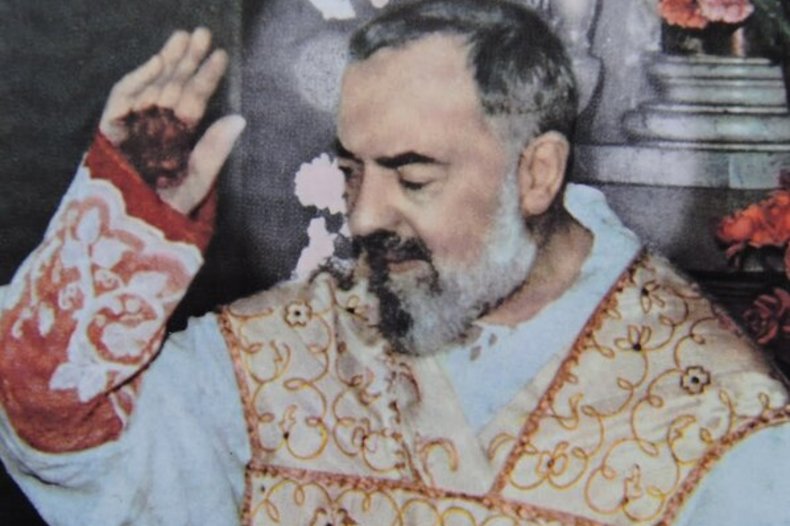
Padre Pio wearing the stigmata, photo taken in the 1940s / © Jornal O Bom Católico, Public domain, via Wikimedia Commons.
Les raisons d'y croire :
The way in which the wounds appeared - on the hands, feet, head (crown of thorns), side (lance wound) and right shoulder - defies science: they all appeared together "in a split second", ruling out the idea of a natural origin, religious "auto-suggestion" or a psychiatric symptom.
- From 1919 onwards, Padre Pio's stigmata were the subject of numerous medical analyses, carried out by half a dozen medical experts (Doctors Amico Bignani, Giorgio Festa, Luigi Romanelli, Alberto Caserta, Agostino Gemelli, and others). With the exception of one, they all concluded that the wounds were not caused by external trauma (natural or voluntary) and that they did not follow the normal changes observed in natural epidermal wounds.
- Dr Romanelli examined Padre Pio a total of five times, in 1919 and 1920: he observed a perfect constancy of the phenomenon from one time to the next. The stigmata could not have a natural origin because, unlike the usual epidermal wounds, they opened and closed without any human intervention; moreover, they never became infected or suppurative.
In 1920 and 1925, Doctor Festa met Padre Pio on several occasions in San Giovanni Rotondo. He also operated on the saint twice (for an inguinal hernia in 1925, then for a cyst in 1927). In 1938, he published the results of his analyses of the wounds, stating that they were "a mystery to science".
- No one could have secretly caused, hidden and maintained such deep wounds for half a century! All the more so since the saint was so well known: over his lifetime, it is estimated that twenty million people attended his Masses and five million went to confession with him. It is quite impossible to maintain a deception of this magnitude for so long and in front of so many witnesses.
- By applying a thumb in the saint's palm and an index finger on the back of his hand, one could feel a "gap", revealing the depth of the wound which, if it had been caused deliberately, would have caused a life-threatening infection, something that never happened.
- The wounds on his hands, feet and side stayed bloody every day for half a century - something that science still can't explain. What's more, a glass's worth of arterial blood leaked from the side wound alone every day, which is an unusually large quantity for a natural wound.
- The blood type flowing from the wounds was identified as AB, a rare category, identical to that found on the Shroud of Turin and in the miraculous host of Lanciano.
- There was no point (psychological or material) for the young religious of 1918 to invent such a story. In fact, Padre Pio's stigmata only brought him a long series of difficulties and persecutions, including to the people who were close to him, until 1964! Padre Pio never paid much attention to his stigmata and continued to exercise his ministry in permanent humility.
- Critics that presents Padre Pio as a false, hysterical mystic who self-mutilated to draw attention to himself, do not have any evidence. Padre Pio's whole life speaks for itself: he had a sound mind, common sense, exceptional charity, behaved in obedience to his superiors and bishops, was an excellent administrator and manager of the hospital he founded, and so on.
- Numerous testimonies collected throughout the saint's life show that he was very cautious with regard to unexplained phenomena. Until his death in 1968, there is no testimony (oral, recorded, or even the testimony of a third party) suggesting that he was attracted to the paranormal, or suffered from mythomania.
From a theological standpoint, Padre Pio's stigmata are a marvellous illustration of his spirituality: bearing the cross with Jesus, in prayer, solitude and the regular life of the cloister, he participated in the Lord' Passion in an exceptional way. Padre Pio saw himself as a "a humble brother who prays", and nothing else.
- The way in which the saint describes the sudden appearance of the stigmata in 1918 (vision of an angelic being, then of Christ) is very similar to the other accounts we have, dating from the 13th century up until now, from all religious backgrounds (priests, monks, hermits, beguines).
- Padre Pio could not have invented such a story. He made a distinction between the "supernatural" (invisible) and the "extraordinary" (sensible), and saw in the wounds not a somatic disorder but a visible sign of an invisible "grace". This story is in harmony with the Church's theology and doctrine, told from a perspective of faith and correlated with the sufferings of Jesus. Did Padre Pio seek to imitate another stigmatised person, such as Teresa of Avila, for instance? He did not: his exposure to books was very limited and this idea doesn't explain how he could have pulled off such a hoax for 50 years under public and medical scrutiny.
- The wounds disappeared unexpectedly just a few moments after his death, without any human intervention whatsoever. No physiological, dermatological, neurological or psychiatric explanation has everbeen able to explain the origin or the end of this stigmatisation.
- Padre Pio has been honoured by the Church at the highest levels since the pontificate of Saint Paul VI. The latter openly defended the saint by lifting all previous sanctions. He was beatified on 2 May 1999 and canonised on 16 June 2002.
- Since his death in 1968, not a single voice has been raised, either in the Church or in scientific circles, against the authenticity of the stigmata, and no one - among historians and psychiatrists - has identified any fraudulent behaviour on the part of Padre Pio.
- The stigmata Padre Pio bore were not the only supernatural event in his life. The saint's life was punctuated with prodigious events, all of which have been recorded by thousands of reliable witnesses: ecstasies, soul-reading, bilocations, prophecies, the gift of healing, extraordinary perfumes, diabolical attacks, incorruption of the body since 1968, etc. On 20 March 1983, the preliminary investigation for the beatification process began. Seven years later, the Church had authenticated seventy-three miracles, grouped together in 104 typed volumes.
Synthèse :
Born in 1887 in Pietrelcina, southern Italy, Francesco Forgione turned to the religious life as a teenager. He entered the Capuchin novitiate in Morcone in 1903 and took temporary vows the following year, followed by solemn vows on 27 January 1907. On 10 August 1910, he was ordained a priest and began to feel pain in his hands and feet, although no injury had yet appeared by then.
The young priest began to experience a number of extraordinary phenomena: soul readings, visions, bilocations, and so on. It wasn't long before he became a much sought-after confessor. Thousands of faithful flocked to the Franciscan convent of San Giovanni Rotondo. He took no notice of these mystical manifestations and continued to exercise his ministry in permanent humility.
On 5 August 1918, he received his first "wound of love": it felt like "an arrow of fire". He saw a "celestial being"holding in his hands a "long lance with a point", from which came something "likefire". The friar was struck by this burning point and felt its physical and moral effects very intensely. This is called "transverberation", a phenomenon known at least since Saint Teresa of Avila. His account is not metaphorical, still less allegorical: it is that of a tangible fact whose material aspect must not obscure its authentic meaning: an exceptional participation in the sufferings of Jesus crucified.
On the following 20th September, at about ten o'clock in the morning, Padre Pio fell into ecstasy and saw a "mysterious figure" bleeding from the hands, feet and side. The figure disappeared after a few seconds. When the saint came to, he saw that his hands, feet and side were "pierced " and "bleeding profusely".
He later discovered that his shoulder bore the mark of Jesus' cross. The wound caused by the crown of thorns bled almost daily for fifty years, at every Mass the priest celebrated. The wounds on the hands were located on the third metacarpal. They were about two centimetres in diameter and, like those on the feet, were deep, since the epidermis was pierced right through. The one on the side (cf. Jn 19:34) consisted of a double cut forming a kind of cross in the left side of the chest: one measured 7 centimetres and the other (from the fifth to the ninth rib), perpendicular to the first, about 3.5 centimetres.
The ecclesiastical authorities, starting with the Capuchin superiors, ordered medical examinations. Between 1919 and 1920, a good half-dozen doctors attended the father's bedside. With the exception of Dr Alfredo Gemelli, most of them considered that the origin of the wounds was not linked to external trauma (self-mutilation) and that they did not follow the evolutionary process of natural epidermal wounds.
Doctor Luigi Romanelli, for example, visited the convent of San Giovanni Rotondo five times. He declared: "In the palmar areas of both hands [...], there is a wine-red pigmentation of the skin over an area the size of a fifty-cent bronze coin on the right hand and two cents on the left. The perimeter is slightly swollen. The shape is almost circular. The size of these holes could have been caused by a nail used for crucifixion, since nailing was the most common practice at the time." (cf. Pierre Barbet, La Passion de Jésus-Christ selon le chirurgien, 14th edition, Paris, Mediaspaul, 2003, p. 72-74).
Padre Pio's stigmata are said to be "imitative", in the sense that they imitate most artistic representations of the wounds of Jesus on the cross. Only the authentic location changes: Jesus was crucified in the carpals and not in the palms of his hands, as the Latin iconographic tradition illustrates, because otherwise the mass of his body would have led to rapid tearing of the flesh.
However, these deep and very painful wounds never slowed the saint down in the exercise of his ministry. He celebrated Mass every morning, heard confessions for up to twelve hours a day (each penitent in line had to be given a number!), and managed to build an efficient hospital, all the while leading an exceptional spiritual life from every point of view, against a backdrop of persecution deliberately orchestrated against him, his "popularity" being too great in the opinion of his critics. He was then forbidden to celebrate Mass in public, had his mail opened and had microphones installed in his confessional. Never once did he rebel or simply oppose these orders. He put up with everything as if it were a grace from heaven.
On 14 October 1954, Doctor Alberto Caserta from Foggia took several X-rays of the Capuchin's body. The examination, "carried out in dorsopalmar projection, on both hands and feet, did not reveal any interruption of the bone structure" which definitively contradicts the hypothesis of self-mutilation.
In 2007,the Italian historian Sergio Luzzatto believed he had found the proof of the saint's wilful deception. In the Vatican archives, he discovered a 1919 document from a pharmacy in Puglia, explaining that Padre Pio had ordered four grams of carbolic acid "in the greatest secrecy" to disinfect the syringes used to vaccinate the monks against Spanish flu. However, this is a moot point: this chemical, also known as hydroxybenzene acid, is highly corrosive. A 1% aqueous solution causes severe irritation in humans. At higher doses, the product is fatal. The Nazis killed many prisoners by injecting them with hydroxybenzene. Given these properties, it is hard to imagine why (or how) Padre Pio would have used such a harmful substance on himself.
Although some of his religious brothers did not like him, he was admired by many people, from the lowest to the highest classes of society, starting with Pope Benedict XV, then by Saint Paul VI and Saint John Paul II. In 1948, a young Polish seminarian studying in Rome visited Padre Pio for the first time. Before he had time to open his mouth, the Padre Pio said to him: "You'll be Pope one day!" The young man's name was Karol Wojtyla.
Padre Pio experienced his last human troubles in 1960, at a time when he was world-famous and had never left his convent. That year, the Holy Office restricted his public appearances. His popularity even disturbed public order in San Giovanni Rotondo! But this troublesome measure was lifted by Paul VI in 1964. From then on, Padre Pio redoubled his pastoral zeal. He died of a heart attack on 2 September 1968, probably caused by sheer exhaustion. An examination of his body just after his death showed that the stigmata had mysteriously disappeared, including all the scars!
Beatified in 1999, Padre Pio was raised to the altars on 16 June 2002, in the presence of an estimated 150,000 people. On 3 March 2008, the 40th anniversary of his death, the saint's body was exhumed and found to be perfectly preserved.
Patrick Sbalchiero
Au-delà des raisons d'y croire :
Alongside the stigmata and so many extraordinary facts, documented, cross-checked and attested, Padre Pio's holiness can be measured by the scope of his charity. He gave himself to God by giving himself to others, by hearing confessions all day for half a century, by answering letters, and above all by praying for all those who came to him.
His charity is well known, despite rumours circulating about the large sums of money that passed through his hands... But he devoted all of the people's donations to the establishment of the Casa Sollievo della Sofferenza, a hospital equipped with the kind of high-tech medical equipment that southern Italy did not have in the 1950s.
Aller plus loin :
Padre Pio: The True Story by C. Bernard Ruffin, Our Sunday Visitor; 3rd ed. edition (September 21, 2018)
En savoir plus :- The article 1000 reasons to believe: "Saint Padre Pio: the wonders of God through a humble brother who prays ".
Padre Pio: Encounters With a Spiritual Daughter From Pietrelcina by Graziella DeNunzio Mandato, TAN Books (April 23, 2021)
Padre Pio and His Stigmata: A 28-Day Prayer Book Guide to Embracing Suffering with Faith from the Writings of Saint Pio by Michael Fide, Independently published (October 26, 2024)
Saint Padre Pio Speaks - Book 1: Pray by Marie-Josée Thibault, Abba Books LLC (April 11, 2023)
Saint Padre Pio Speaks - Book 2: The Eucharist Explained by Marie-Josée Thibault, Abba Books LLC (November 2, 2024)
Padre Pio: Encounters With a Spiritual Daughter From Pietrelcina by Graziella DeNunzio Mandato, TAN Books (April 23, 2021)
Padre Pio and His Stigmata: A 28-Day Prayer Book Guide to Embracing Suffering with Faith from the Writings of Saint Pio by Michael Fide, Independently published (October 26, 2024)
Saint Padre Pio Speaks - Book 1: Pray by Marie-Josée Thibault, Abba Books LLC (April 11, 2023)
Saint Padre Pio Speaks - Book 2: The Eucharist Explained by Marie-Josée Thibault, Abba Books LLC (November 2, 2024)









